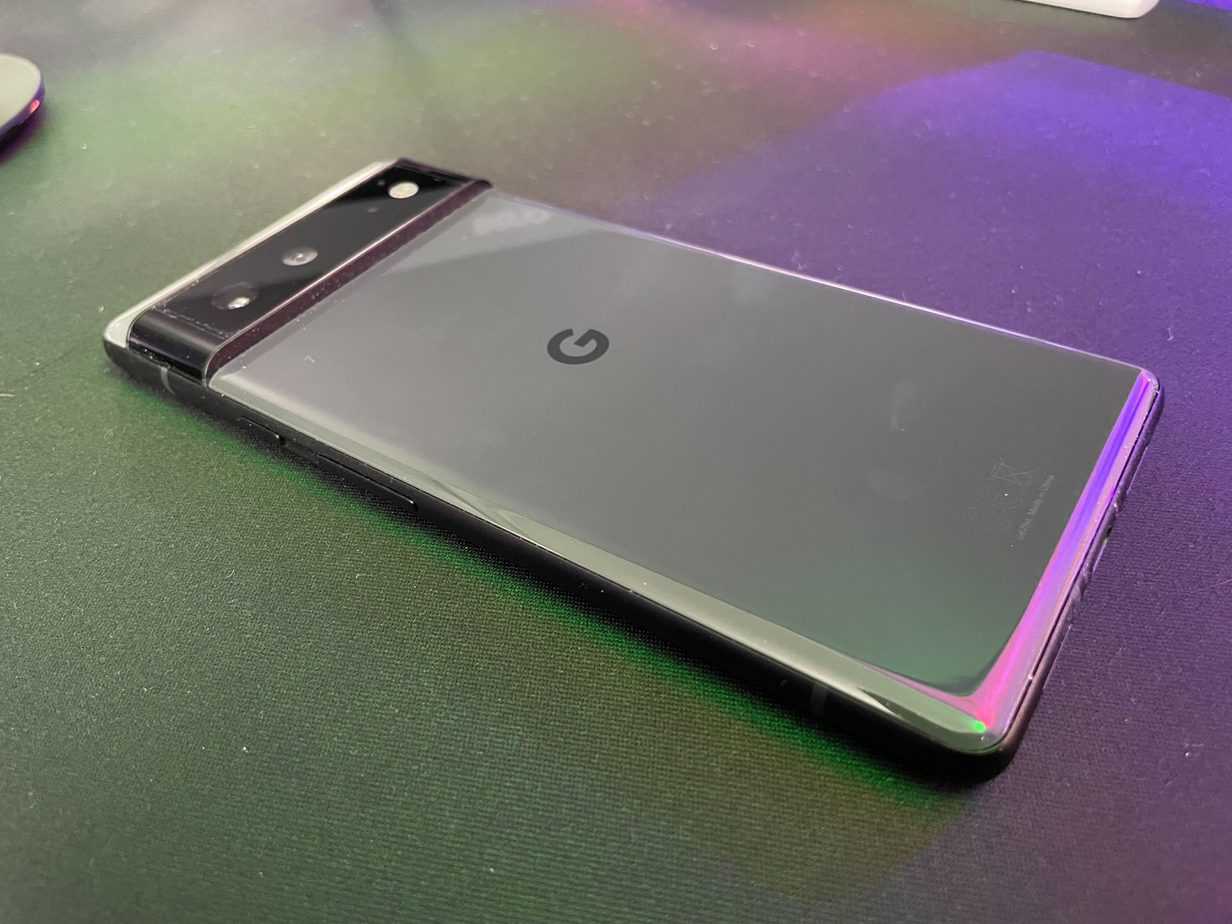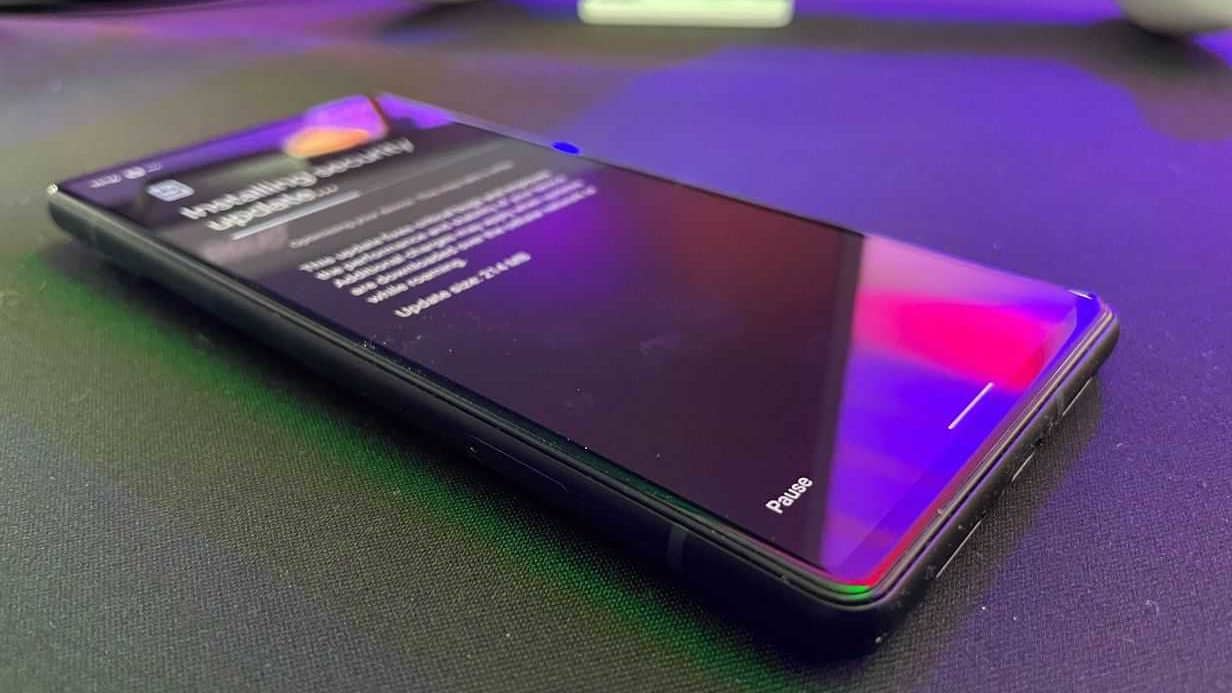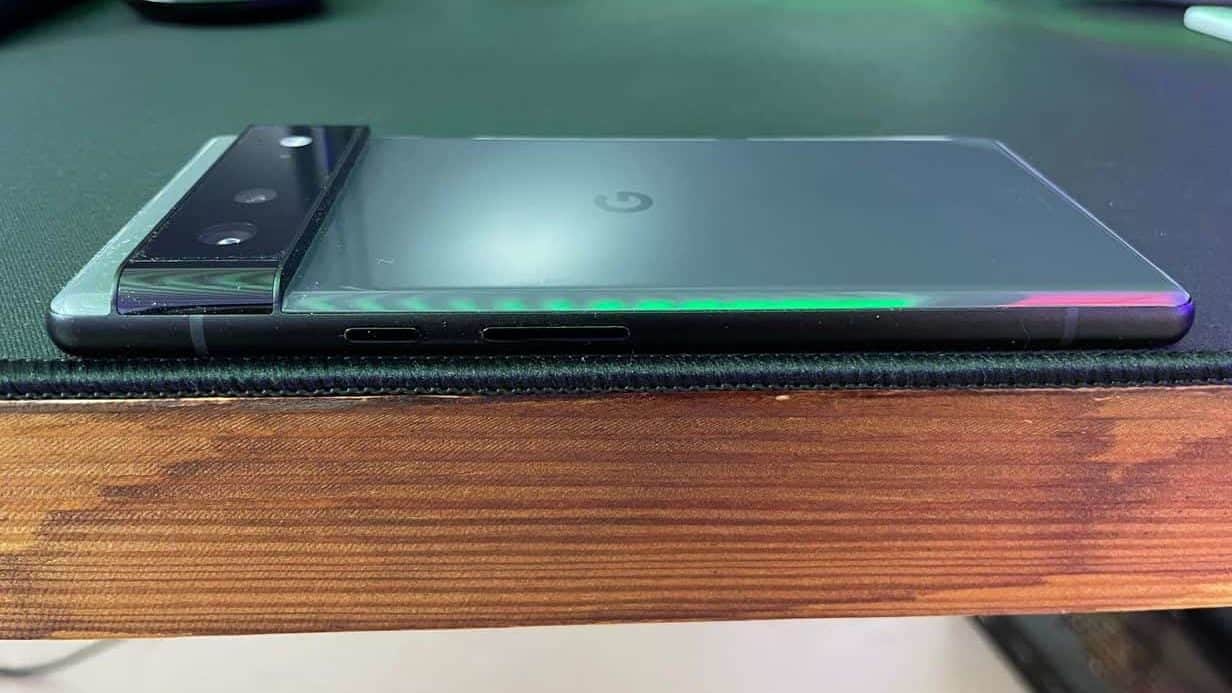Is the Google Pixel 6 a good phone? Here’s our three-month review

Table of Contents
We've spent a good amount of time with Google Pixel 6, opting to reserve our thoughts until we felt enough time has passed for the dust to settle on the Google Tensor-powered flagship. Almost three months after release, we've been using Google Pixel 6 daily and getting used to the Google ecosystem. Is the Google Pixel 6 a good phone? Let's get into it.

Let's start with how Google Pixel 6 works. Unlike its Android competition that's mostly powered by Snapdragon SoCs (System on a Chip) that rely on raw processing power, Pixel 6 steps away from the arms race status quo to harness the power of machine learning and artificial intelligence with Google Tensor. Here's a full specification breakdown before diving in:
Google Pixel 6 Specifications
| Google Pixel 6 | |
| Display | 6.4-inch OLED 20:9 aspect ratio FHD+ resolution2,400 x 1,080 411ppi 90Hz refresh rate HDR support24-bit depth Gorilla Glass Victus front Gorilla Glass 6 back |
| Processor | Google Tensor Titan M2 security |
| RAM | 8GB LPDDR5 |
| Internal storage | 128GB or 256GBUFS 3.1 |
| Battery and power | 4,600mAh (typical)Fast wired charging. USB-PD 3.0 (PPS)21W wireless charging (w/ Pixel Stand)12W Qi wireless charging Battery share USB Charger plug not included |
| Cameras | Rear: – 50MP main1.2 μm, ƒ/1.85, 82-degree FoV 1/1.31-inch sensor LDAF, OIS, and EIS – 12MP ultra-wide1.25 μm, ƒ/2.2, 114-degree FoV – Laser Auto Focus Front: – 8MP single1.12 μm, ƒ/2.0, 84-degree FoV |
| Video | Rear:4K at 30/60FPS1080p at 30/60FPS Front:1080p at 30FPS |
| Audio | Stereo speakers Triple mics Bluetooth 5.2 |
| Security | In-display fingerprint Titan M2 chip 5 years security updates IP68-rated |
| Buttons and ports | USB-C 3.1 Gen 1Power button Volume rocker Dual SIM (single nano and eSIM) No expandable storage |
| Connectivity | Wi-Fi 6E (802.11ax)Bluetooth 5.2NFC support |
| Software | Android 12 w/ Pixel UI |
| Dimensions and Weight | 158.6 x 74.8 x 8.9mm 207g |
Google Tensor
We wrote about why Tensor is a big deal back when it was announced alongside the Pixel 6 line back in September 2021. The two main takeaways here are Google's efficient machine-learning SoC that focuses on delivering experiences that users want, such as advanced photography features and live translations, and Google controlling their own support lifespans.
What do we mean regarding Google support? Well, OEMs such as Samsung, Huawei, and more are at the mercy of chip manufacturers when it comes to supporting firmware updates. With Google manufacturing their own silicon, they have direct control over how long a device can be updated for and fine-tune the user experience overall.
So how does that translate into Google Pixel 6? Well, the first noticeable difference is the camera software itself that utilizes features such as magic eraser and background blur. Granted, results may vary, but the magic eraser removes people and other artifacts from images.
Before Magic Eraser Adjustments After Magic Eraser Adjustments
Sometimes the feature falls short of photoshop magic, but using blur and the various photo editing features of Google Pixel 6 does the job for the most part. In other words, this feature isn't a solid replacement for a proper photoshop job but is fine for average users looking for access to smart features that will only improve over time.
When it comes to other photo editing features on Google Pixel 6, Portrait Light and Color Focus work together to make a person or item stand out against busy backdrops, lighting up a subject or fading the color palette of their backgrounds respectively.
The Camera app experience just works and that's all the average user wants, and Google is clearly targeting the mass market with their flagship range. All camera lenses perform well in a variety of circumstances such as bad weather, indoor/low light, and are great for catching in-motion events, providing they're outdoors.

Again, the magic behind the process is Tensors AI capabilities, providing long exposure or action shots that capture background blur whilst focusing on a moving object. The Action Pan mode does the opposite and exaggerates movement blur to photos to provide a sense of motion. As previously mentioned, these modes work best in outdoor environments capturing high-speed events.
Video also looks great on Google Pixel 6, with wide-angle and 2x optical zoom and up to 4K resolutions at 60 FPS keeping those memories fresh for years to come. The slow-motion and time-lapse features are also cool additions, capturing fast-moving and slow-moving events and bringing their speeds down and up for digestible content. We really need to start filming some 3D prints!
Looking at all of our photos and videos over the months is a treat thanks to Google Pixel 6s screen. The 6.4-inch 2,400 x 1,080 OLED screen pops thanks to accurate color representation and HDR support, and it doesn't feel small compared to Google Pixel 6 Pros 6.7-inch screen. It's just the right size to use with one hand without sacrificing screen real estate.
Is the Google Pixel 6 a good phone compared to Google Pixel 5?
Those who upgrade from a Google Pixel 5 will appreciate the extra screen space without struggling to fit Google Pixel 6 in a pocket. In fact, Google Pixel 6 is a significant upgrade over Google Pixel 5:
| Google Pixel 5 | Google Pixel 6 | |
| Screen size | 6-inch fullHD+ OLED display (90Hz) | 6.4-inch fullHD+ AMOLED flat display (90Hz) |
| Screen resolution | 2340 x 1080 | 2400 x 1080 |
| SoC | Qualcomm Snapdragon 765G | Google Tensor |
| RAM | 8GB (LPDDR4X) | 8GB (LPDDR5) |
| Storage | 128GB, non-expandable | 128GB/256GB, non-expandable |
| Rear cameras | 12.2MP (f/1.7 aperture, 27mm lens, 1.4um pixel size, dual pixel PDAF, OIS)16MP (ultra-wide, f/2.2 aperture, 1.0um pixel size, 107-degree FoV) | 50MP (f/1.9 aperture, 1.2um pixel size, 26mm lens, omnidirectional PDAF, OIS, Laser AF)12MP (f/2.2 aperture, 1.25um pixel size, 114-degree FoV) |
| Front cameras | 8MP (f/2.0 aperture, 24mm lens, 1.12um pixel size) | 8MP (f/2.0 aperture, 24mm lens, 1.12um pixel size) |
| Battery | 4,080mAh, non-removable, 18W fast battery charging, 18W wireless charging, reverse wireless charging | 4,614mAh, non-removable, 30W wired charging, 21W wireless charging |
| Dimensions | 144.7 x 70.4 x 8.0 mm | 158.6 x 74.8 x 8.9mm |
| Weight | 151 grams | 207 grams |
| Connectivity | 5G, LTE, NFC, Bluetooth 5.0, Wi-Fi, USB Type-C | 5G, LTE, NFC, Bluetooth 5.2, Wi-Fi, USB Type-C |
| Security | Rear-facing fingerprint scanner | In-display fingerprint scanner (optical) |
| OS | Android 11 | Android 12 |

The move to Google Tensor and upgrading the RAM to LRDDR5 has significantly boosted the performance of Google's flagship. There's nothing Google Pixel 6 can't handle, with the most demanding mobile games such as Call of Duty Mobile providing solid and smooth gameplay. For a mid-range handset, this is incredible value for money.
For those not looking to game on Google Pixel 6, it's a brilliant multitasker with very little competition at its price point. At the time of writing, the only Android smartphone that's noteworthy competition is the Samsung Galaxy S21 FE, a budget version of Samsungs current flagship with some great specifications.
The issue with mid-range handsets is build quality, and it's been an issue with Google handsets over the years too. Google Pixel 6 has a bold yet modern design thanks to its rear camera bar and glass/metal sandwich build. The bezel surrounding the screen isn't very invasive and doesn't suffer from a camera notch, rather a centralized hole-punch design that doesn't get in the way of notifications.

A major quality of life improvement over Google Pixel 5 is the speaker arrangement. Users will find a vastly improved audio experience from Google Pixel 6, and it's mostly down to speaker placement. Google Pixel 5s speaker is fitted under the screen, which muffles the speaker's output considerably for both phone calls and general audio use such as streaming music and video. Google Pixel 6 has much better speaker placement at the bottom of the handset with dedicated cutouts for traditional voice calling.
Wireless fast charging has also been boosted to 18w support over the old 21W found in Google Pixel 5, which means supported wireless charging pads will pump Google Pixel 6 full of juice a little bit faster. Any improvement is good, right?
It's not perfect
As much as we love Google Pixel 6 for its flagship features and mid-range price point, there are one or two cut corners. Those looking to fit screen protectors might struggle with fingerprint scanning. Even after the much-needed November 2021 update, the under-screen fingerprint scanner isn't the best.
Users can opt to improve screen sensitivity, but extra pressure is ultimately needed for the fingerprint scanner to function alongside screen protectors. It can be a bit hit or miss at times without one too, with a couple of attempts needed to unlock a handset or use it in another app. Although we will say that we found more success using the fingerprint scanner in third-party apps such as Last Pass and banking apps.

With previous updates attempting to fix the issue, we're concerned that this is simply a hardware issue. It's not a big enough problem to not invest in a Google Pixel 6, but it can be a bit of a bugbear sometimes.
Bluetooth dropouts can also be an issue for those not on the latest updates for Google Pixel 6. We've noted multiple instances of Google Pixel Buds not connecting properly during our time with Google Pixel 6, with sound only coming through the right earbud.
However, Google delayed their December 2021 and January 2022 updates due to consumer feedback, and they are certainly listening and want to get it right with their latest flagship device. As time goes on, the user experiences for Google Pixel 6 and its vanilla Android 12 build are getting better and better.
Bugs in smartphone software are unfortunately consumers have to deal with in any brand from time to time, the vast majority of which are patched out when spotted with future operating system updates.
The best version of Android 12
Google owns Android, which means Pixel users get the latest Android builds and releases first, which also includes beta testing if users wish to get a sneak peek. It's free of OEM fluff and their own versions of stock Android apps, which frankly don't cut the mustard for us. This is Android how it's meant to be enjoyed, with Google Tensor bringing the full-fat experience with live translations and subtitles for accessibility and so much more.

Let's not forget Google Assistant, the star of the Android 12 show. We've found that Google Assistant provides relevant resolutions to requests more often when compared with the competition, and without trying to push other Google products.
It also works amazingly well with Google Home and other third-party smart devices. Our Google Pixel 6 is used alongside two Google Home Hub Max, Google Nest, Hive thermostat, and a selection of different third-party smarts plug and smart bulbs, and it just works together as it should. One of our favorite features is asking one of our Google speakers to find Google Pixel 6, which then activates a ringtone on Google Pixel 6 regardless of sound or notification settings.


